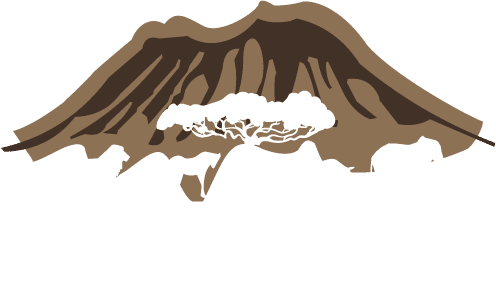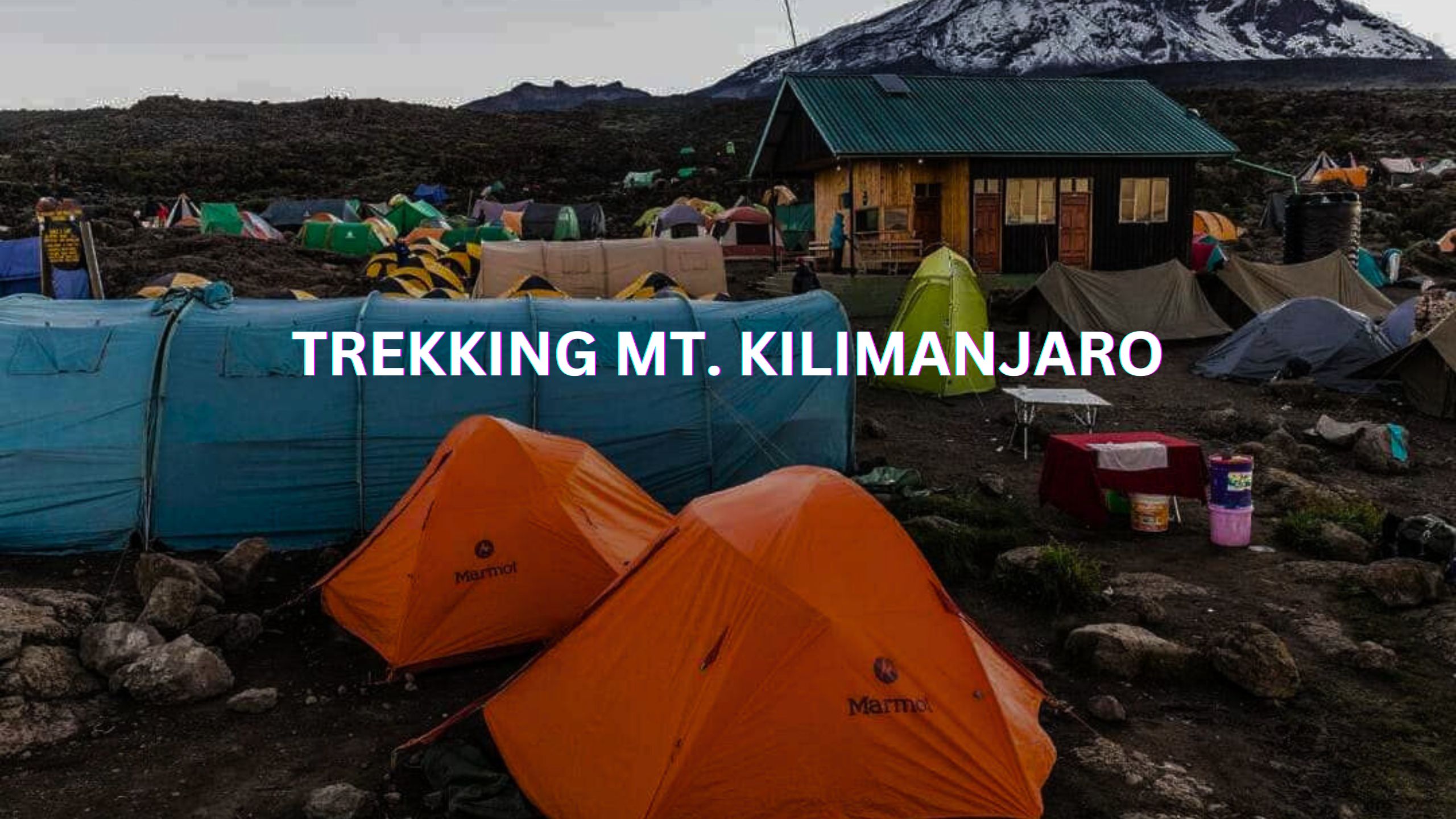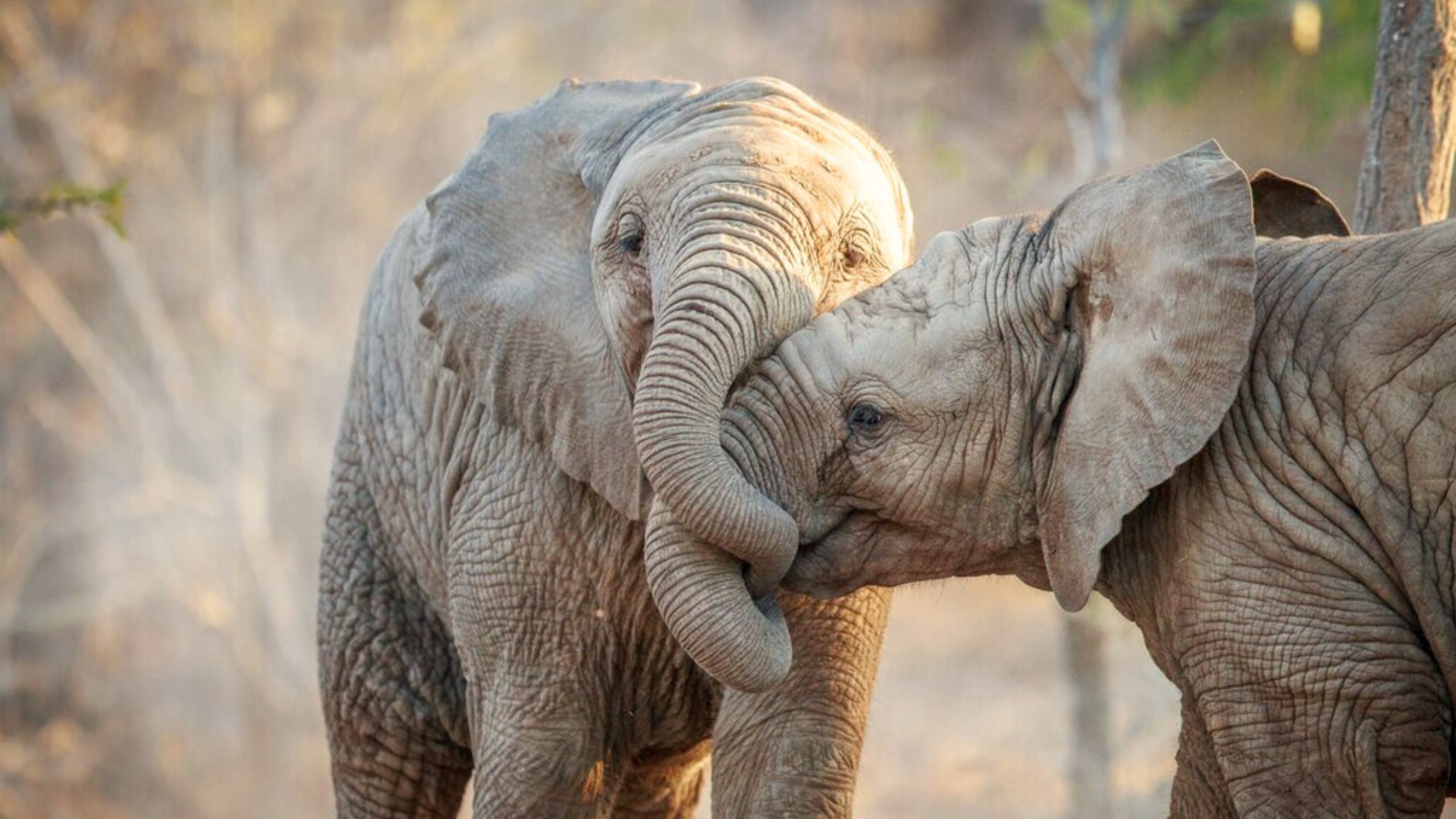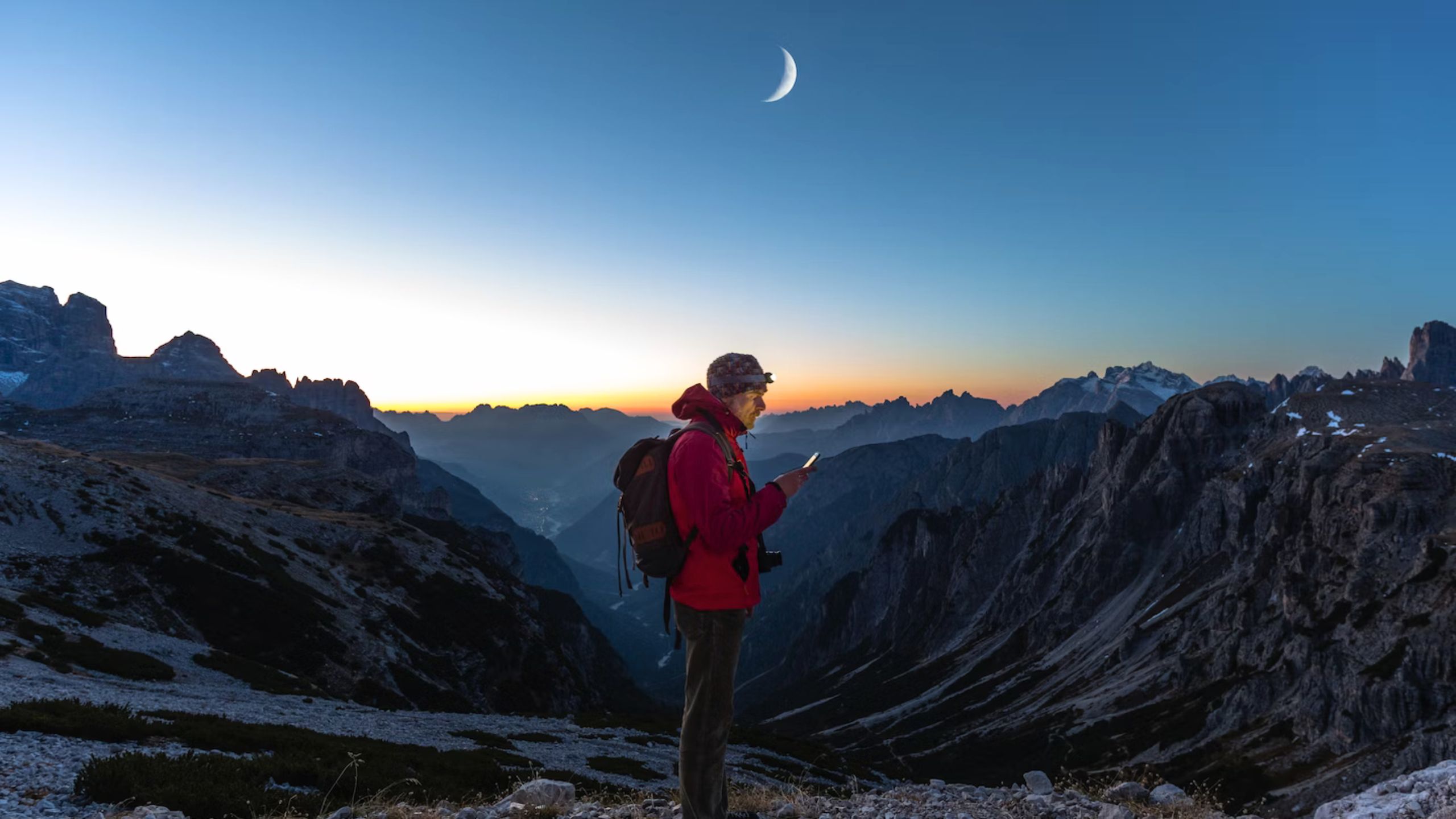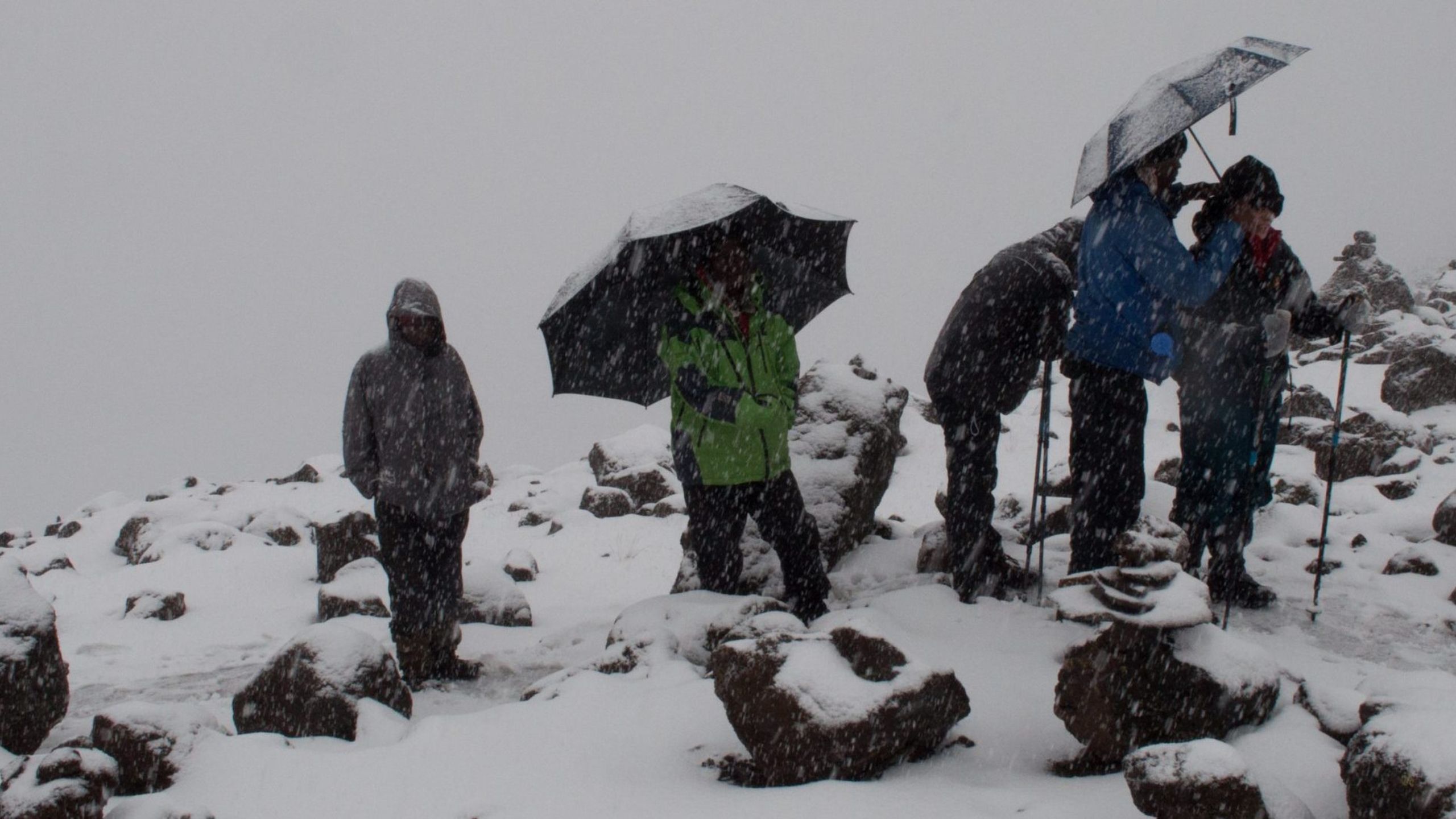Mt. Kilimanjaro, located in Tanzania, is the highest peak on the African continent and one of the most iconic mountains in the world. Standing tall at 5,895 meters (19,341 feet), it attracts thousands of adventurers every year who seek to conquer its majestic summit.
The journey to the rooftop of Africa is an exhilarating and challenging experience, requiring physical endurance, mental resilience, and careful preparation.
In this comprehensive guide, we will explore the various aspects of trekking Mt. Kilimanjaro, including its routes, preparation, challenges, safety considerations, and the awe-inspiring rewards that await those who conquer this mighty mountain.
Table of Contents:
1. Geography and Background of Mt. Kilimanjaro
2. Routes to the Summit
- a. Marangu Route
- b. Machame Route
- c. Lemosho Route
- d. Rongai Route
- e. Northern Circuit Route
3. Preparation and Training
- a. Physical Fitness
- b. Acclimatization
- c. Packing Essentials
- d. Hiring a Guide or Joining a Group
- e. Permits and Regulations
4. Climbing Kilimanjaro: Day-by-Day Itinerary
- a. Arrival and Registration
- b. Trekking Days
- c. Summit Night
- d. Descent
5. Challenges and Risks
- a. Altitude Sickness
- b. Weather Conditions
- c. Terrain and Trail Difficulty
- d. Mental and Physical Fatigue
6. Safety Considerations
- a. Altitude Sickness Prevention and Treatment
- b. Hydration and Nutrition
- c. Equipment and Gear
- d. Emergency Procedures
7. Cultural and Natural Highlights
- a. Wildlife and Flora
- b. Local Communities
- c. Unique Geological Features
8. Beyond the Summit
- a. Safari Opportunities
- b. Zanzibar and Tanzania’s Coastline
- c. Cultural Experiences in Tanzania
9. Tips for a Successful Kilimanjaro Trek
10. Frequently Asked Questions (FAQs)
Section 1: Geography and Background of Mt. Kilimanjaro
Mt. Kilimanjaro is located in northeastern Tanzania, near the border with Kenya. It is an inactive stratovolcano formed by volcanic eruptions over millions of years. Composed of three volcanic cones – Kibo, Mawenzi, and Shira – Kilimanjaro is a unique geological and ecological wonder.
The mountain is part of the larger Kilimanjaro National Park, which covers an area of approximately 1,688 square kilometers (652 square miles) and was declared a UNESCO World Heritage Site in 1987.
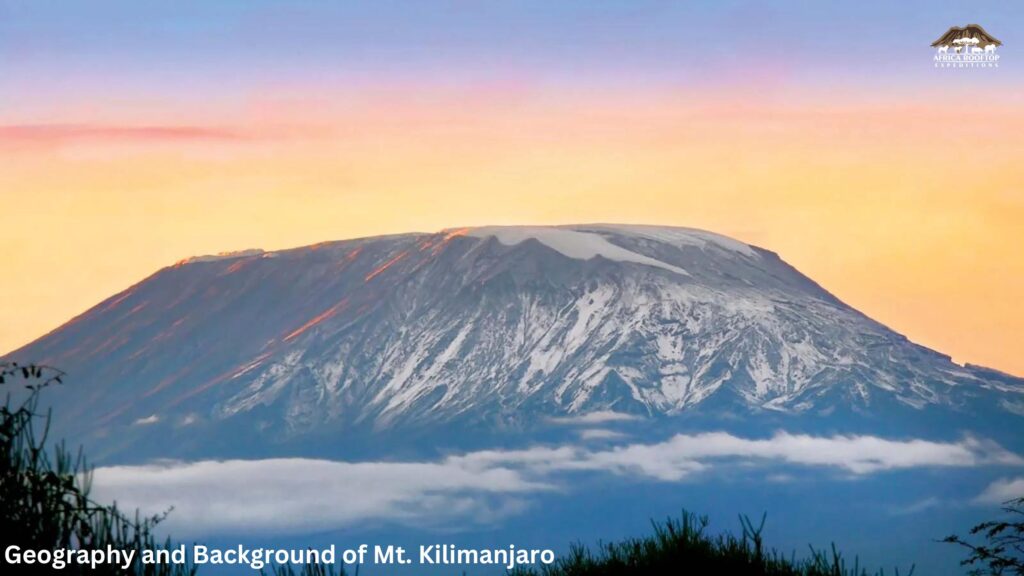
Section 2: Routes to the Summit
There are several routes that lead to the summit of Mt. Kilimanjaro, each offering unique experiences and challenges. The choice of route depends on factors such as duration, difficulty, and scenic beauty. Here are some of the popular routes:
a. Marangu Route: Often called the “Coca-Cola” route, Marangu is the most popular and well-established route. It is known for its huts and relatively gentle slopes, making it a favorite among novice climbers.
b. Machame Route: Also known as the “Whiskey” route, Machame is one of the most scenic and challenging routes. It offers stunning views and diverse landscapes but requires good physical fitness and endurance.
c. Lemosho Route: The Lemosho route is considered one of the most beautiful routes, with breathtaking scenery and a high success rate. It provides excellent acclimatization opportunities and is recommended for those seeking a more secluded trekking experience.
d. Rongai Route: The Rongai route approaches Kilimanjaro from the northeastern side and is known for its wilder and less crowded trails. It offers stunning views and is suitable for climbers of various skill levels.
e. Northern Circuit Route: The Northern Circuit is the longest route and follows a circular path around the mountain. It offers excellent acclimatization and breathtaking scenery, making it a popular choice for those seeking a more immersive experience.
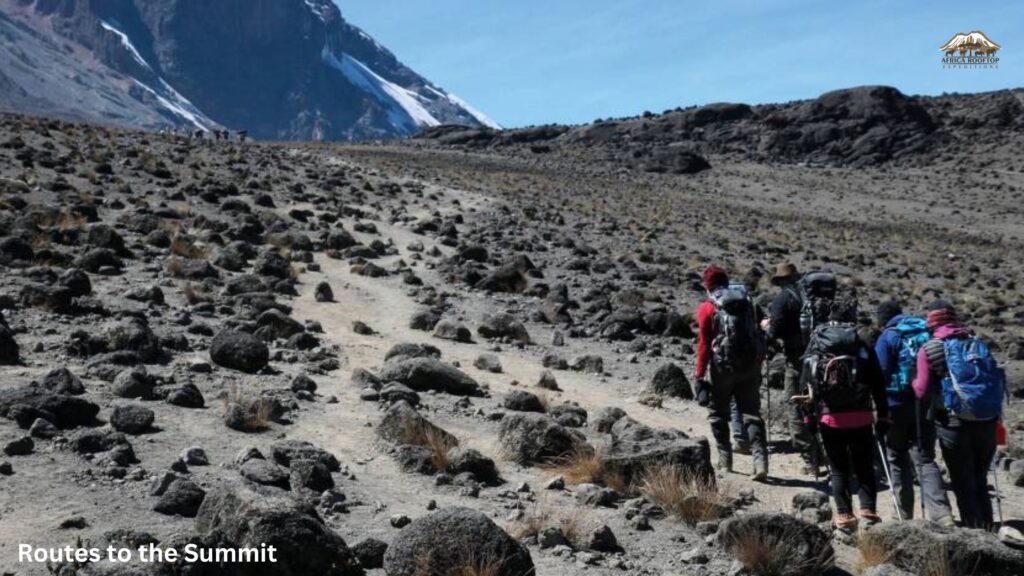
Section 3: Preparation and Training
Trekking Mt. Kilimanjaro requires careful preparation and physical training to ensure a safe and successful climb. Here are some key factors to consider:
a. Physical Fitness: Climbing Kilimanjaro is physically demanding, and a good level of fitness is essential. Engage in regular cardiovascular exercise, strength training, and hiking to prepare your body for the challenges ahead.
b. Acclimatization: Altitude sickness is a significant concern when climbing Kilimanjaro. Gradual acclimatization is crucial to minimize the risk. Consider choosing a longer route that allows for proper acclimatization or include additional acclimatization days in your itinerary.
c. Packing Essentials: Pack lightweight, moisture-wicking clothing suitable for both warm and cold weather conditions. Essential items include a sturdy pair of hiking boots, warm layers, waterproof outerwear, a hat, gloves, sunglasses, and a high-quality backpack.
d. Hiring a Guide or Joining a Group: While it’s possible to climb Kilimanjaro independently, it is highly recommended to hire a knowledgeable guide or join a reputable trekking group. They provide valuable expertise, ensure your safety, and enhance your overall experience.
e. Permits and Regulations: Obtain the necessary permits and adhere to the regulations set by the Kilimanjaro National Park authorities. This includes paying park fees, obtaining climbing permits, and following designated trails.
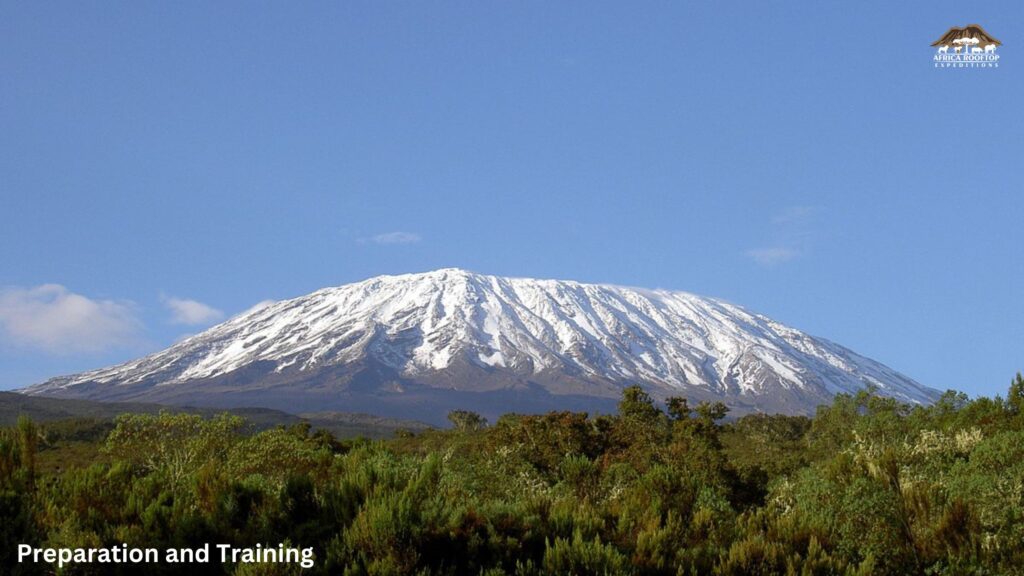
Section 4: Climbing Kilimanjaro: Day-by-Day Itinerary
A typical Kilimanjaro climb takes around 7 to 9 days, depending on the chosen route. Here’s a day-by-day itinerary:
a. Arrival and Registration: Arrive in Tanzania, transfer to your hotel, and complete any necessary registrations and briefings. Use this time to rest and acclimatize to the local climate.
b. Trekking Days: The trekking days begin with a drive to the starting point of your chosen route. From there, you start your ascent, hiking through varied terrains and passing through different climatic zones. Each day involves several hours of hiking, with designated rest stops and overnight stays at designated campsites or huts.
c. Summit Night: The summit night is the most challenging part of the climb. You start in the early hours of the morning, hiking in darkness to reach the summit at sunrise. This involves navigating steep slopes and enduring freezing temperatures. The feeling of reaching Uhuru Peak, the highest point on Kilimanjaro, is an unforgettable moment.
d. Descent: After reaching the summit, you begin your descent. Descending usually takes fewer days than ascending, and you’ll retrace your steps through various campsites until you reach the base of the mountain.
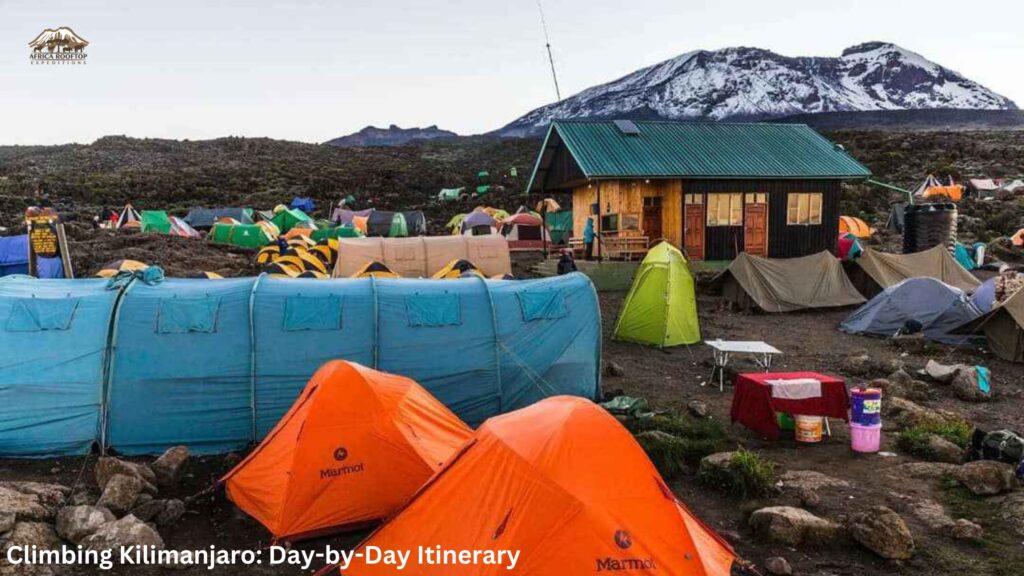
Section 5: Challenges and Risks
Trekking Mt. Kilimanjaro poses several challenges and risks that climbers should be aware of. Here are some of the main challenges:
a. Altitude Sickness: Altitude sickness, also known as acute mountain sickness (AMS), is a common concern when climbing Kilimanjaro. It is caused by the rapid ascent and reduced oxygen levels at high altitudes. Symptoms include headache, nausea, dizziness, and fatigue. Proper acclimatization, slow ascent rates, and staying hydrated can help minimize the risk.
b. Weather Conditions: Weather conditions on Kilimanjaro can be unpredictable and change rapidly. It is essential to be prepared for a wide range of weather conditions, including extreme cold, strong winds, rain, and even snow. Dressing in layers and having appropriate gear is crucial.
c. Terrain and Trail Difficulty: Kilimanjaro’s trails vary in difficulty, with some sections being steep, rocky, or requiring scrambling. Climbers should be prepared for different types of terrain, including loose scree, boulders, and exposed sections. Proper footwear and trekking poles can be beneficial.
d. Mental and Physical Fatigue: Climbing Kilimanjaro is physically and mentally demanding. Long hours of hiking, especially during the summit night, can be physically exhausting. Maintaining a positive mindset, listening to your body, and taking adequate rest breaks are essential for managing fatigue.
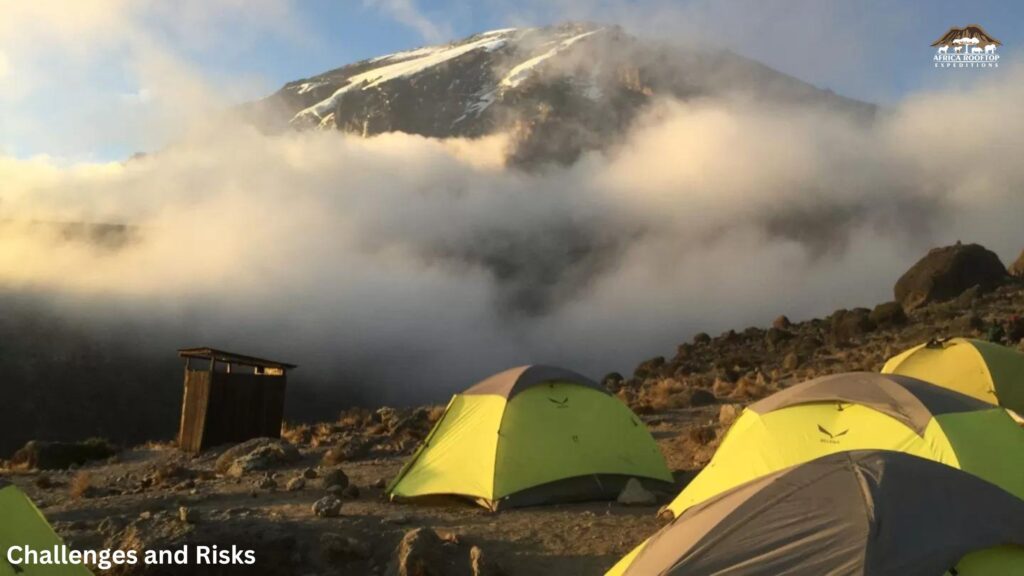
Section 6: Safety Considerations
Safety should always be a top priority when trekking Mt. Kilimanjaro. Here are some key safety considerations:
a. Altitude Sickness Prevention and Treatment: Gradual ascent, proper acclimatization, staying hydrated, and listening to your body are crucial for preventing and managing altitude sickness. It’s essential to familiarize yourself with the symptoms and know when to descend if necessary.
b. Hydration and Nutrition: Proper hydration and nutrition are vital for maintaining energy levels and preventing altitude-related illnesses. Drink plenty of water and consume a balanced diet that includes carbohydrates, proteins, and healthy fats.
c. Equipment and Gear: Ensure you have the necessary equipment and gear, including a well-fitting backpack, sturdy hiking boots, warm clothing layers, a good sleeping bag, a headlamp, and sun protection. Test and familiarize yourself with your gear before the climb.
d. Emergency Procedures: Familiarize yourself with emergency procedures and protocols. Your guide should have a plan in place for emergencies, including evacuation options and access to medical support.

Section 7: Cultural and Natural Highlights
Trekking Mt. Kilimanjaro offers more than just a physical challenge. It provides an opportunity to immerse yourself in Tanzania’s rich cultural and natural heritage. Here are some highlights:
a. Wildlife and Flora: Kilimanjaro is home to unique wildlife, including elephants, buffalo, monkeys, and a variety of bird species. The mountain’s slopes are adorned with diverse flora, including giant groundsels and heather.
b. Local Communities: Interacting with local communities can enrich your experience. Learn about the local cultures, traditions, and ways of life through encounters with the Chagga people, who have inhabited the slopes of Kilimanjaro for centuries.
c. Unique Geological Features: Kilimanjaro’s distinct geological features, such as the Shira Plateau, Barranco Wall, and the snow-capped summit, offer awe-inspiring sights throughout the trek.
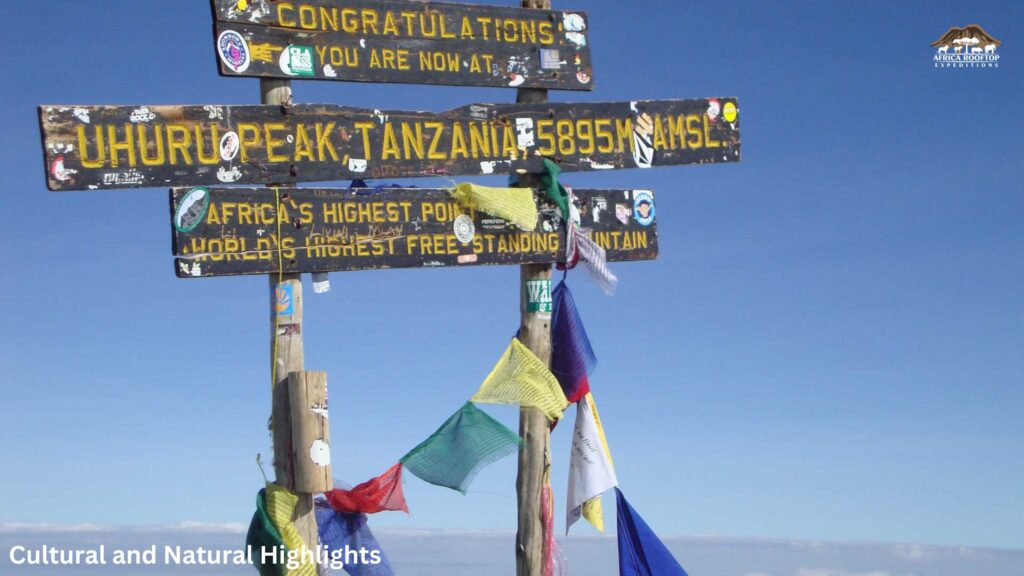
Section 8: Beyond the Summit
Once you’ve conquered Mt. Kilimanjaro, there’s much more to explore in Tanzania. Consider extending your trip to include:
a. Safari Opportunities: Tanzania is renowned for its incredible wildlife and national parks. Embark on a safari adventure to witness the iconic Serengeti migration, explore the Ngorongoro Crater, or visit other nearby parks like Tarangire or Lake Manyara.
b. Zanzibar and Tanzania’s Coastline: Tanzania’s coastline offers pristine beaches and idyllic islands. Relax and rejuvenate on the white sandy beaches of Zanzibar or explore the historical Stone Town, a UNESCO World Heritage Site.
c. Cultural Experiences in Tanzania: Immerse yourself in Tanzania’s rich culture by visiting local villages, engaging in traditional activities, or participating in community-based tourism initiatives. This allows you to connect with the local people and gain a deeper understanding of their way of life.
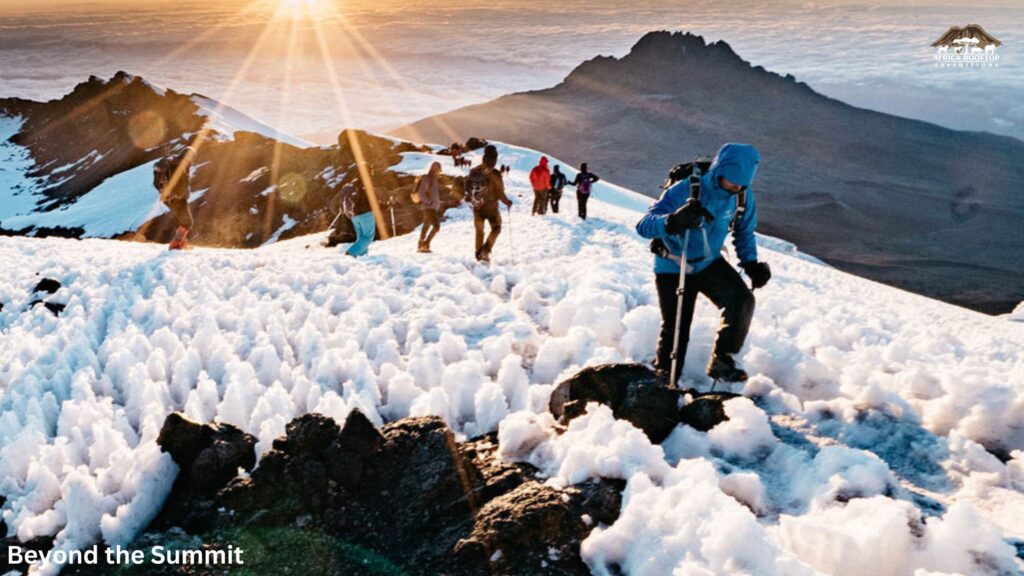
Section 9: Tips for a Successful Kilimanjaro Trek
To ensure a successful Kilimanjaro trek, consider the following tips:
- Start training and preparing well in advance, focusing on cardiovascular fitness and strength training.
- Take the time to acclimatize properly by choosing a longer route or including extra acclimatization days.
- Stay hydrated by drinking plenty of water throughout the trek.
- Pace yourself and listen to your body’s signals to avoid exhaustion or altitude-related illnesses.
- Dress in layers to adapt to changing weather conditions and pack essential gear, including a good sleeping bag, headlamp, and trekking poles.
- Maintain a positive mindset and surround yourself with a supportive team of fellow climbers and guides.
- Respect the mountain and its environment by adhering to Leave No Trace principles and following park regulations.
Section 10: Frequently Asked Questions (FAQs)
This section provides answers to common questions related to trekking Mt. Kilimanjaro. It covers topics such as cost estimates, the best time to climb, the level of difficulty, and the age limits for climbers.
Trekking Mt. Kilimanjaro is an extraordinary adventure that offers not only a physical challenge but also an opportunity to immerse yourself in the natural beauty and cultural heritage of Tanzania.
By adequately preparing, understanding the challenges, and ensuring your safety, you can embark on a journey to reach the rooftop of Africa and create lifelong memories. So, gather your gear, train your body and mind, and set off on the exhilarating quest to conquer Mt. Kilimanjaro.
